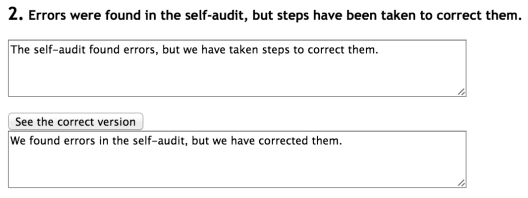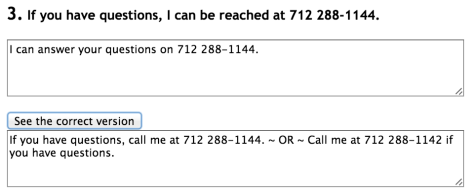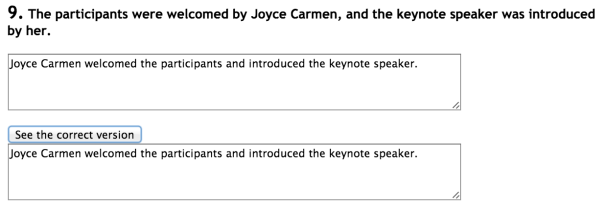a. Review your blog against the ‘Blog Writing Checklist’ on page 3 of the activity sheet.
☑ Weekly activities are clearly tagged or categorised so teaching staff can access posts easily.
☑ All references to ‘i’ as an individual word (and its relational words i’m, i’ld) have been capitalised.
☑ If you have used ‘it’s’, it’s because you are referring to ‘it and is’ as a conjunction. This is the ONLY time an apostrophe is used in ‘it’s’.
☑ All sentences have a full-stop at the end of a sentence.
☑ If you have made reference to an external website or reading, you have referenced the original source or created a direct link to the original website.
☑ All references are consistent, and correctly punctuated for the referencing style you are using.
☑ If you have used a figure, it is in keeping with the rule: spell out numbers under 10, use figures over 10 unless the number starts the sentence.
☑ All proper nouns are capitalised.
☑ You have correctly used apostrophes as plural or possessive. Every time you have used an apostrophe, ask yourself whether it is possessive or plural, and depending on the answer, then ask yourself if it is being used correctly.
☑ Check that you have used the correct words in your posts – common errors include quite/quiet, for example. You should pick these up if you read your work aloud.
☑ If you have used the word ‘however’ in the middle of a sentence to indicate a shift in sentence direction, consider whether it needs a semi-colon before the word (eg. The dog was black; however, it was easy to spot at night because it was very shiny.)
☑ Review subject/verb agreement. (eg. If the subject is singular, the verb should also be singular – ‘The dog is shiny’; not ‘The dog are shiny’.)
☑ Revise the length of your sentences. If your sentence is more than a couple of lines in your blog, it needs to be shortened. Shorter sentences have greater impact and are more active generally.
☑ Read your work aloud. Every sentence, every post. If the sentence sounds awkward, rephrase it.
b. Did you find the questions difficult? Did find many issues?
I found this checklist easy to follow and complete, and I did not find many issues with my blog structure or writing at all. I think that I have done a sufficient job with my creation of post content.
Reference List
Ames, K 2015, Week 10 – Blog: Blog submission checklist, COMM11007 Media Writing, CQUniversity e-courses, http://moodle.cqu.edu.au/














